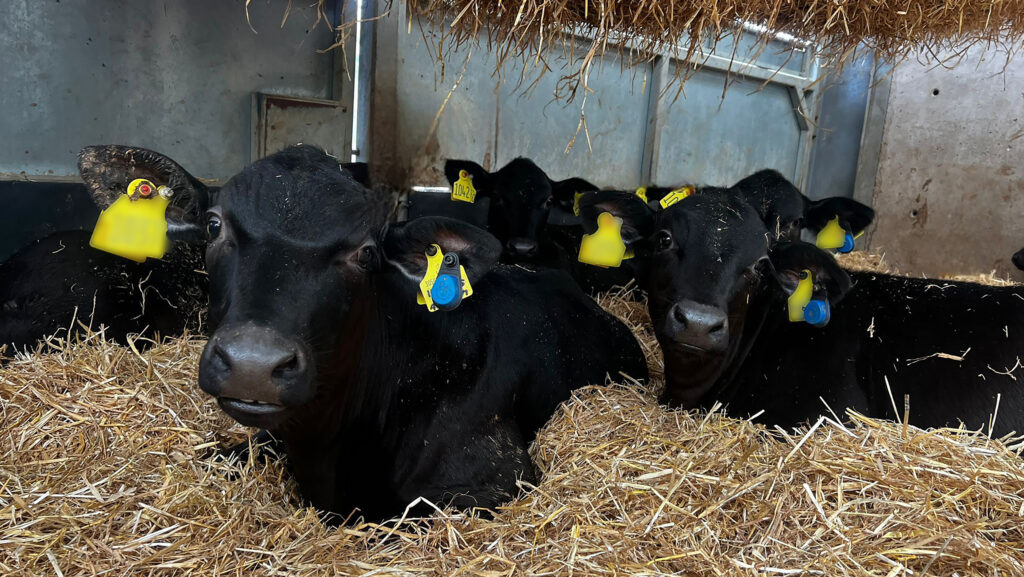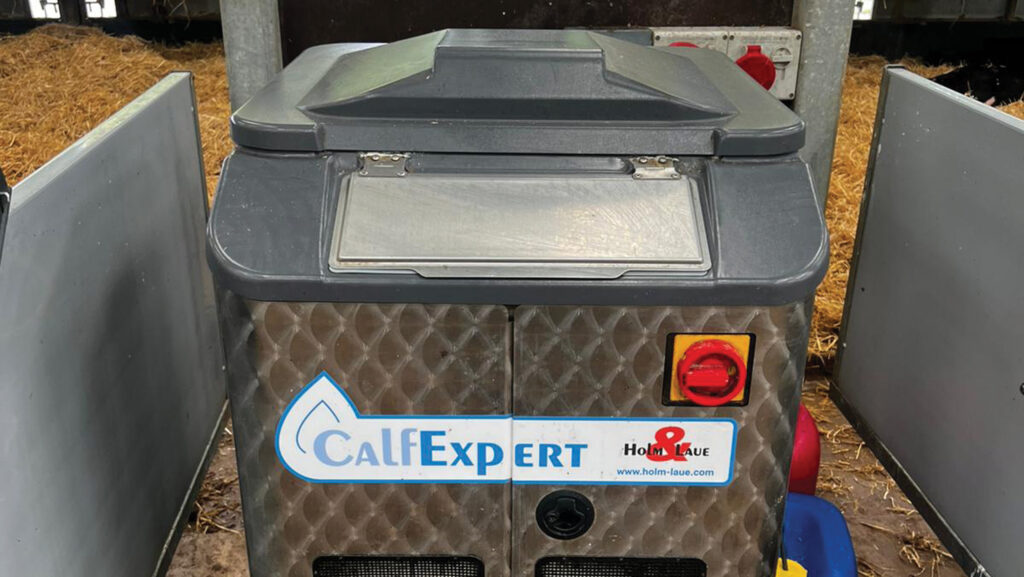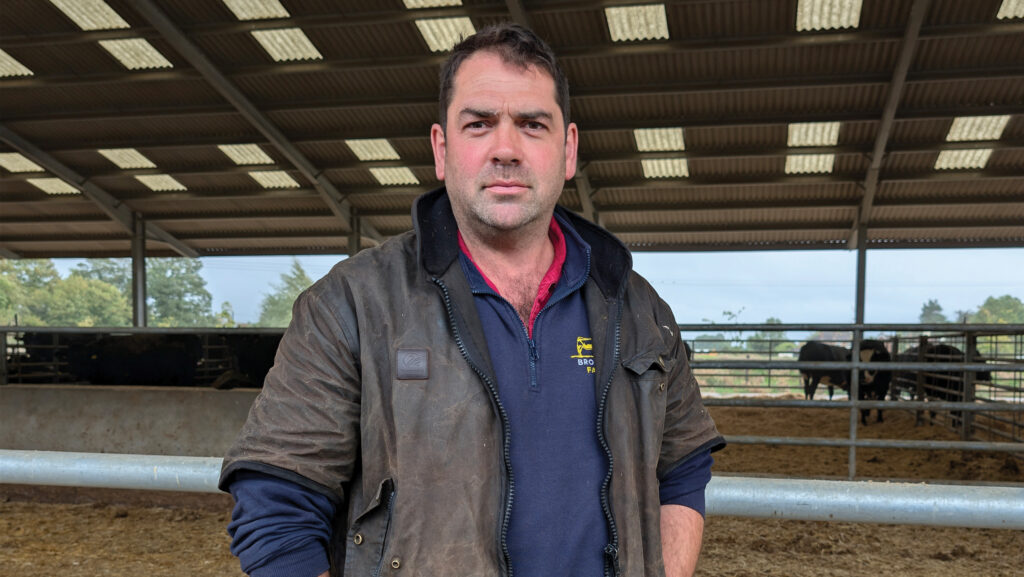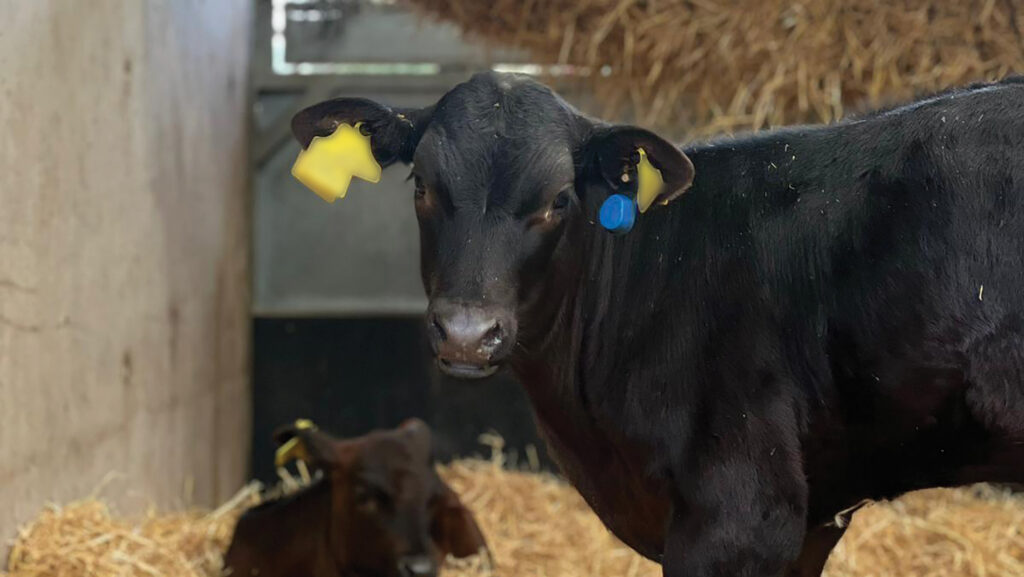Smart technology helps shorten finishing period on Powys farm
 © Pickstock
© Pickstock Increased daily liveweight gain, respiratory health issues driven down by 75% and antibiotic use down 60% are the result of using modern technology with good stockmanship, at Brongain farm, Powys.
The farm team has introduced automatic milk feeders, smart ear tags and calf-side antibody testing alongside a revised vaccine protocol.
This is flagging up problems earlier – as much as three days – allowing earlier intervention.
See also: GB Calf Strategy to focus on unweaned dairy beef calf welfare
Farm Facts
Brongain farm, Powys
- 360 ha of grassland
- 1,400 cattle
- Finishing 900 cattle/year from a predominantly forage-based ration (75%)
- Dairy-beef steers and heifers sourced from local dairy farms at two to four weeks old
- Calves fed six to seven litres/day
- Calf nuts available ad lib from arrival
- Rotational paddock grazing from six to seven months old
- Livestock housed in winter
- Housed at 540-560kg liveweight for finishing on silage-based total mixed ration
- Finished at 650-680kg liveweight and a target 20 months old
The farm, owned by Pickstock, set up four automatic milk-feeding machines six years ago, ensuring the right amounts are fed to calves.
This has helped with growth rates ranging from 0.7kg to 1kg a day.
It is a strict feeding system that the farm follows all the way to weaning, when quantities fed to calves gradually step down over the course of a couple of weeks.
This, says farm manager Tom Jones, ensures a seamless process with limited stress.
“You would not know when the calves are weaned in the shed because there is no specific cut-off point,” he says.

Pickstock automatic feeder © Pickstock
Regular machine calibration
While technology is helping, Tom says, it is important that it gets calibrated to ensure milk replacer is mixed correctly.
“We have found a 2-3% variation among machines and that made a difference, especially if calves were getting underfed.
“That is the first thing to impact performance from a weight gain and animal health point of view,” he explains.

Tom Jones © Pickstock
A member of staff is still in the calf shed every morning and checks on the animals regularly.
“It is that mix of stockmanship and technology.
“Part of their role is to check each milk machine, because it will tell you which calf has not drunk, and then it is combined with a visual check of the animals to see if there is an issue,” adds Tom.
The milk feeders are the first port of call to see if there were any health issues coming down the line.
“You can see if a calf has been off their milk and what they have done the day previously. That then gives us a gradual trend, and we can go in with animal health protocols.”
Maintenance is done by a service team, and staff carry out cleaning and hygiene tasks, although the machine automatically sprays the teats between calves.
Calf health monitoring
In April, the farm introduced MSD Sensehub ear tags, which provide an additional layer of health monitoring.
As soon as calves arrive on site, they have their temperature taken and are then tagged.
The sensor takes a few days to “learn” what is normal for each animal and then picks up any early signs of infection by taking regular temperature checks.
It also measures lying down time, suckling time in the estimated feeding window, and provides an alert if anything is out of the ordinary in their behaviour.

© Pickstock
“We have got a comprehensive vaccine protocol, but this provides much earlier detection of any issues we might have and gives us a good 36-48-hour head start,” explains the farm’s vet Rob Edwards of Cain Farm Vets.
If a problem is detected, the LED light will flash in the ear tag alerting staff.
“When a member of staff sees a light flashing in the morning, the first thing they do is to take the calf’s temperature and then there are protocols in place to follow,” says Tom.
“This really helps, especially with respiratory issues in the early stages and allowed us to reduce antibiotic use by 60%,” adds Rob.
When a tag picks up a problem, calves are now given a non-steroidal anti-inflammatory drug in the first instance.
However, Tom is clear that it is not possible to rely on the tags alone.
“The calves have two tags, one for the milk machine and the other for the Sensehub. If they are, for example, in slightly the wrong place, the information you get back might not be completely accurate.
“They are just tools and should not be replacing the skills that we bring to the table as quality stockmen.”
Antibody testing
To further ensure calf health, the farm carries out ImmunIGY Bovine IgG blood tests, to check on the levels of antibodies (IgG) present in calves up to 42 days of age.
The IgG level indicates whether the calf has received sufficient, high-quality colostrum in the correct time frame before arriving on farm.
When first introduced in summer 2024, every calf was tested and results showed that 13% of calves scored “red”, indicating they had insufficient antibody levels.
Working closely with their dairy farmer suppliers to reward best practice over the past year, the team has closed the gap.
“The test ensures we get healthy calves onto the farm. If they have not had enough colostrum, they are potentially a ticking time bomb.
“No matter how good your management, vaccine protocols or husbandry, at some point the calf is more likely to break down with something,” says Rob.
Tom points out that ensuring that calves have the right amount of colostrum also translates into quicker finishing times.
“If a calf has pneumonia, it can add a good couple of months to finishing time, so we make sure they get the best possible start,” he explains.
“Now we’re looking at 20 to 21 months finishing time. If a calf had pneumonia, it can bring it up to 25 months – from an emissions perspective, and sustainability and profitably perspective, it has a great impact.”
Bespoke vaccination protocol
Rob has also made some changes to the vaccination protocol, with the aim of reducing calf stress and handling frequency.
To do this, he has started combining vaccines. The protocol has been designed to cover against important, yet commonly found, pathogens and those present on the farm as shown by previous testing.
On arrival, at two to four weeks of age, calves receive an intranasal vaccine for respiratory viruses (BRS) and (PI3) and at the same time, are given a vaccine to protect against respiratory disease caused by Mycoplasma Bovis.
Seven days later, they are vaccinated against Infectious Bovine Rhinotracheitis, Bovine parainfluenza-3 (PI3), Bovine Viral Diarrhoea and Bovine Respiratory Syncytial Virus and clostridia disease.
Boosters follow three weeks and four weeks later.
“We wanted to get away from jabbing the calves every week for the first 10 weeks as it’s very stressful for them.
“By implementing a new vaccination protocol and combining vaccinations that are not usually administered at the same time, we’ve been able to do that,” Rob explains.
Vaccine guidance
Combining vaccines may not be suitable in all situations and professional advice should be sought before changing protocols.
Farmers are advised by Defra that veterinary medicines must be used in accordance with their authorisation and manufacturers’ recommendations, or on the advice of a vet.
